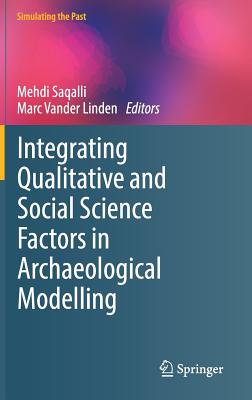Information Modelling for Archaeology and Anthropology: Software Engineering Principles for Cultural Heritage
暫譯: 考古學與人類學的信息建模:文化遺產的軟體工程原則
Gonzalez-Perez, Cesar
- 出版商: Springer
- 出版日期: 2019-06-06
- 售價: $2,790
- 貴賓價: 9.5 折 $2,651
- 語言: 英文
- 頁數: 449
- 裝訂: Quality Paper - also called trade paper
- ISBN: 3319891936
- ISBN-13: 9783319891934
-
相關分類:
Design Pattern
海外代購書籍(需單獨結帳)
相關主題
商品描述
This unique text/reference reviews the key principles and techniques in conceptual modelling which are of relevance to specialists in the field of cultural heritage.
Information modelling tasks are a vital aspect of work and study in such disciplines as archaeology, anthropology, history, and architecture. Yet the concepts and methods behind information modelling are rarely covered by the training in cultural heritage-related fields. With the increasing popularity of the digital humanities, and the rapidly growing need to manage large and complex datasets, the importance of information modelling in cultural heritage is greater than ever before. To address this need, this book serves in the place of a course on software engineering, assuming no previous knowledge of the field.
Topics and features:
- Presents a general philosophical introduction to conceptual modelling
- Introduces the basics of conceptual modelling, using the ConML language as an infrastructure
- Reviews advanced modelling techniques relating to issues of vagueness, temporality and subjectivity, in addition to such topics as metainformation and feature redefinition
- Proposes an ontology for cultural heritage supported by the Cultural Heritage Abstract Reference Model (CHARM), to enable the easy construction of conceptual models
- Describes various usage scenarios and applications of cultural heritage modelling, offering practical tips on how to use different techniques to solve real-world problems
Dr. Cesar Gonzalez-Perez is a Staff Scientist at the Institute of Heritage Sciences (Incipit), within the Spanish National Research Council (CSIC), Santiago de Compostela, Spain.
商品描述(中文翻譯)
這本獨特的文本/參考書回顧了與文化遺產領域專家相關的概念建模的關鍵原則和技術。信息建模任務是考古學、人類學、歷史學和建築學等學科工作和學習的重要方面。然而,文化遺產相關領域的訓練中很少涵蓋信息建模背後的概念和方法。隨著數位人文學科的日益普及,以及管理大型和複雜數據集的需求迅速增長,信息建模在文化遺產中的重要性比以往任何時候都更大。為了滿足這一需求,本書充當了一門軟體工程課程,假設讀者對該領域沒有先前的知識。
**主題和特點:**
- 提供概念建模的一般哲學介紹
- 介紹概念建模的基本知識,使用 ConML 語言作為基礎架構
- 回顧與模糊性、時間性和主觀性相關的高級建模技術,以及元信息和特徵重新定義等主題
- 提出一個由文化遺產抽象參考模型 (CHARM) 支持的文化遺產本體,以便輕鬆構建概念模型
- 描述文化遺產建模的各種使用場景和應用,提供實用建議,說明如何使用不同技術解決現實世界中的問題
這部跨學科的著作是任何與文化遺產相關領域(包括考古學、人類學、藝術、歷史、建築或文學)的導師和學生(本科生和研究生)必備的入門書。文化遺產管理者、研究人員和專業人士也會發現這是一本有價值的參考書,任何參與數據庫設計、數據管理或文化遺產概念化的人士也會受益。
**Dr. Cesar Gonzalez-Perez** 是西班牙國家研究委員會 (CSIC) 下的遺產科學研究所 (Incipit) 的研究科學家,位於西班牙聖地亞哥德孔波斯特拉。
作者簡介
作者簡介(中文翻譯)
塞薩爾·岡薩雷斯-佩雷斯博士是西班牙國家研究委員會(CSIC)下的遺產科學研究所(Incipit)的一名研究科學家,位於西班牙聖地亞哥-德孔波斯特拉。











